We may earn revenue from the products available on this page and participate in affiliate programs. Learn More ›
Trending Trees
Houseplants add green, natural life to any room, and an indoor tree adds height, drama, color, and texture. The best indoor trees can immediately brighten and reinvigorate a boring corner or create a focal point in a lackluster room. These indoor trees—some traditional, some trendy—will help you bring a little bit of the outdoors in.
1. Umbrella Tree
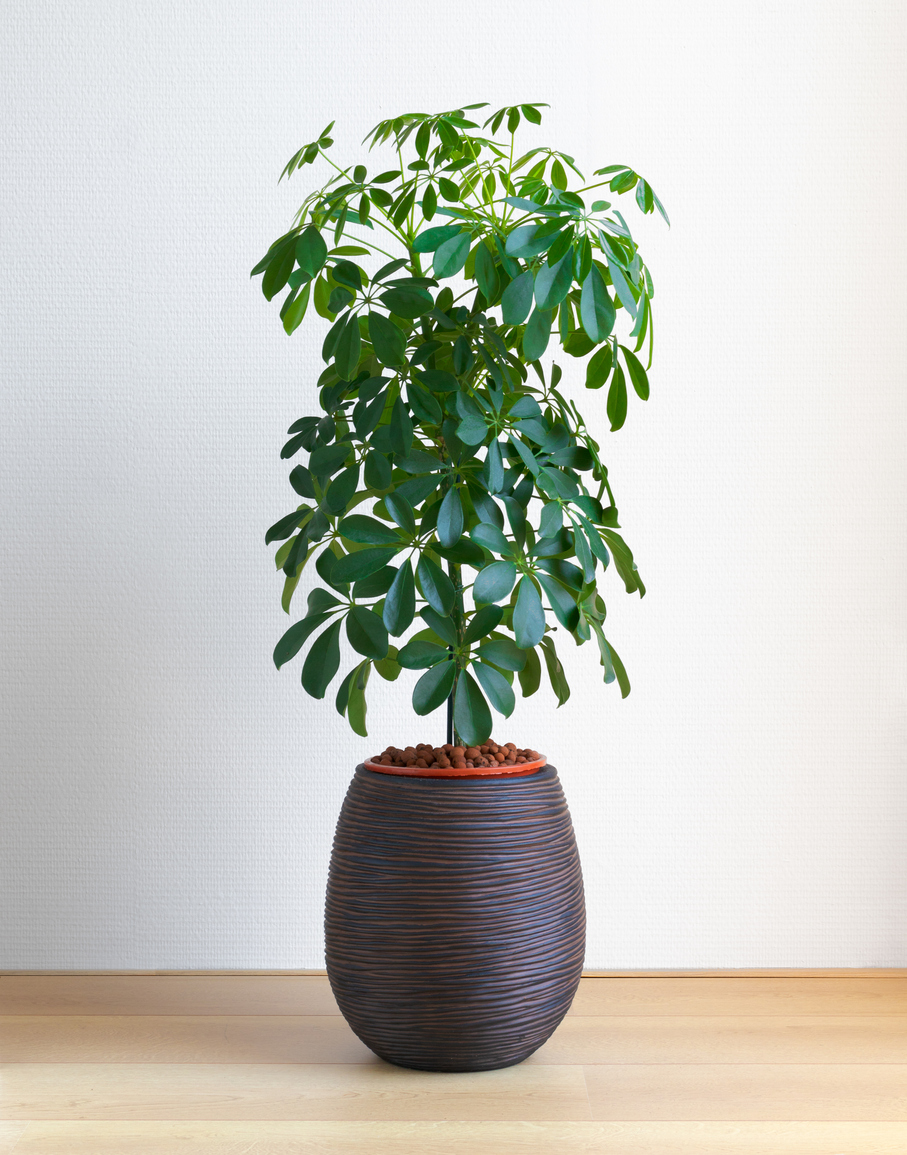
The umbrella tree has slender stems punctuated by graceful leaflets and grows best in bright, indirect sunlight. While this tropical indoor tree can grow quite tall, occasional pruning will help shape it and keep it to a manageable size, from about 4 to 8 feet. Incorporate a single plant as a beautiful accent or group several together to create a natural screen or room divider.
Water: Water when soil is dry, typically every 7 to 14 days. It can tolerate some dry soil, but drooping leaves indicate dryness. Yellowing leaves are signs of over-watering.
Light: Bright, indirect light is best; low to medium light is OK. Direct light can burn its leaves.
Soil: Umbrella trees enjoy rich, well-draining soil.
2. Money Tree
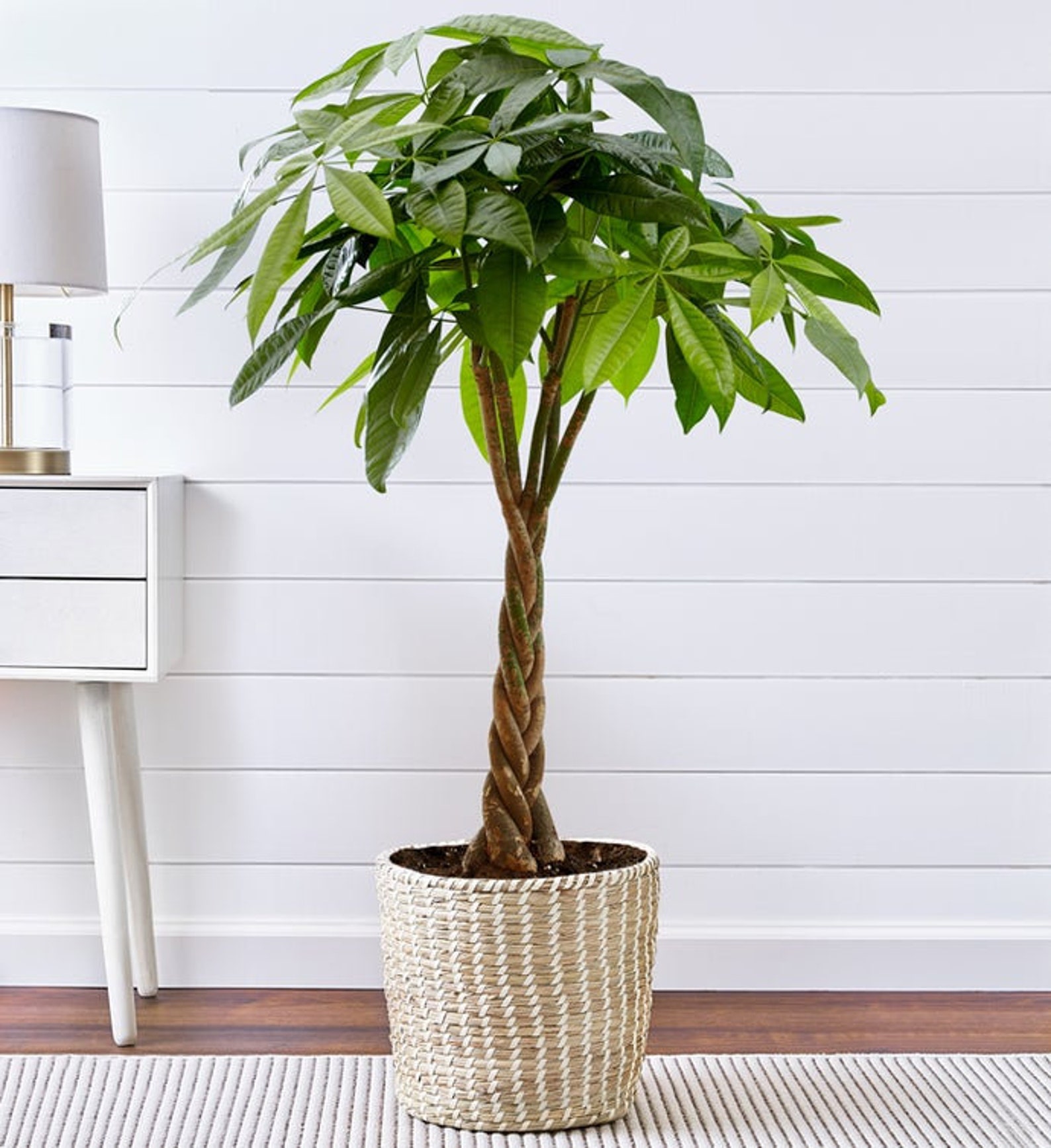
The Malabar chestnut, also known as the money tree, is a traditional symbol of prosperity and good luck. It usually has five trunks that are braided together and require continued braiding as the tree grows. The money tree prefers indirect light and loves humidity, so it’s an excellent choice for a bathroom with a sunny window. Who couldn’t use a little more good luck and prosperity along with a fresh hit of greenery in their decor?
Water: Two or three times a month should do it for watering, since money trees do not like wet feet. When the soil is dry 2 to 4 inches down, it’s time to water.
Light: They prefer bright, indirect light. Placing them in direct light could result in burned leaves.
Soil: A well-draining commercial potting soil is best. Money trees are susceptible to root rot, so good drainage is essential.
RELATED: The Best Soil for Money Trees
3. Meyer Lemon Tree
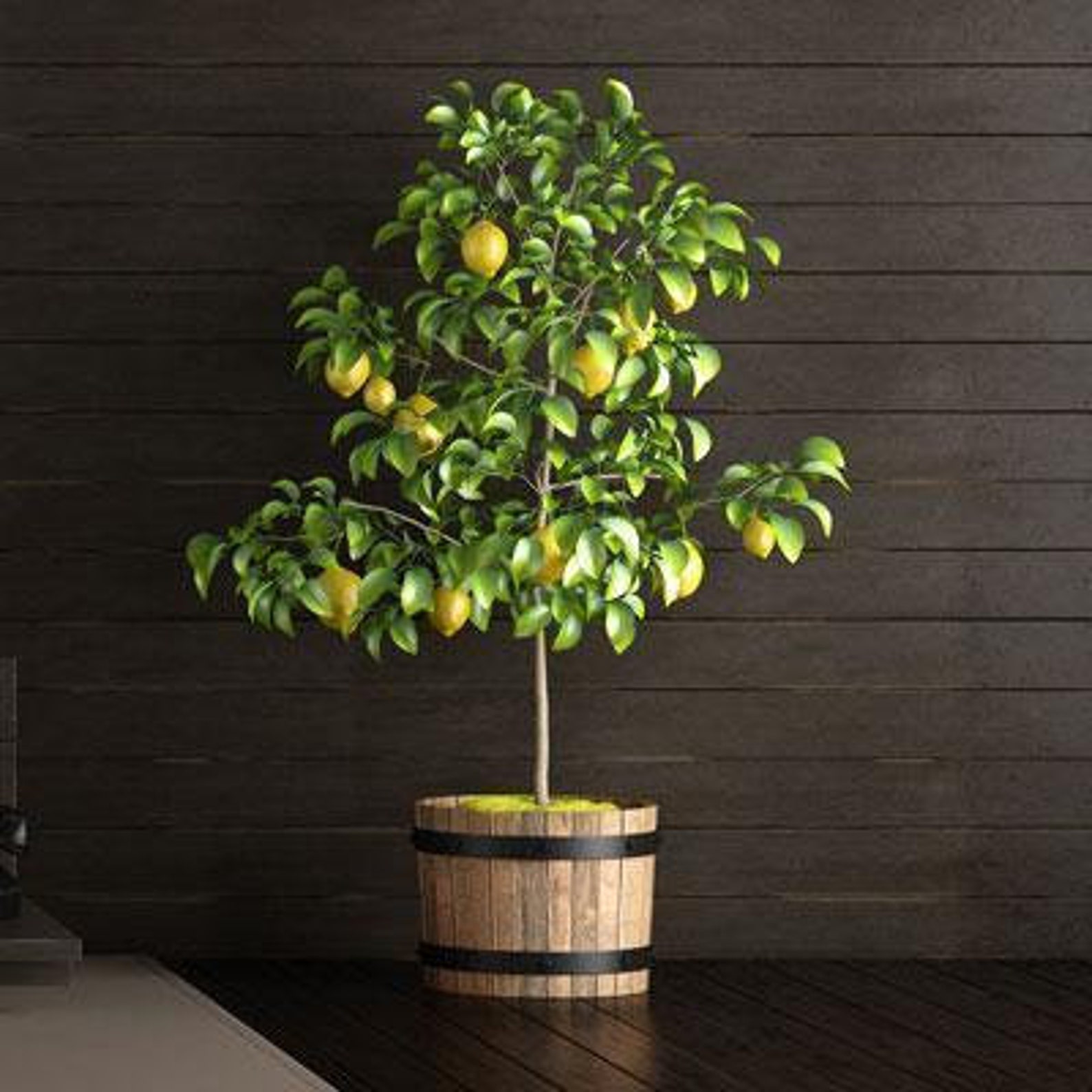
The Meyer lemon is a dwarf variety that’s hardier than most lemon trees and is one of the 10 Indoor Fruit Trees You Can Grow at Home Year-Round because it can be grown indoors. Its thin-skinned fruit is sweeter than that of most other lemon trees, so this variety is particularly appealing to home cooks who love to have the freshest possible ingredients on hand. A Meyer lemon tree enjoys a dose of real sunshine, so bring it outdoors during the warm summer months, and keep it protected indoors during winter.
Water: Give these lemon trees a drink every 1 to 2 weeks, but let the leaves tell you if they’re thirsty. Drooping leaves indicate over-watering; dried, curled leaves indicate dryness.
Light: Flowering and fruiting trees need lots of light (at least 6 hours a day). Place them in a south window for maximum sunshine.
Soil: A citrus potting soil mix is best to provide the extra nutrients needed to produce fruit.
4. Dracaena
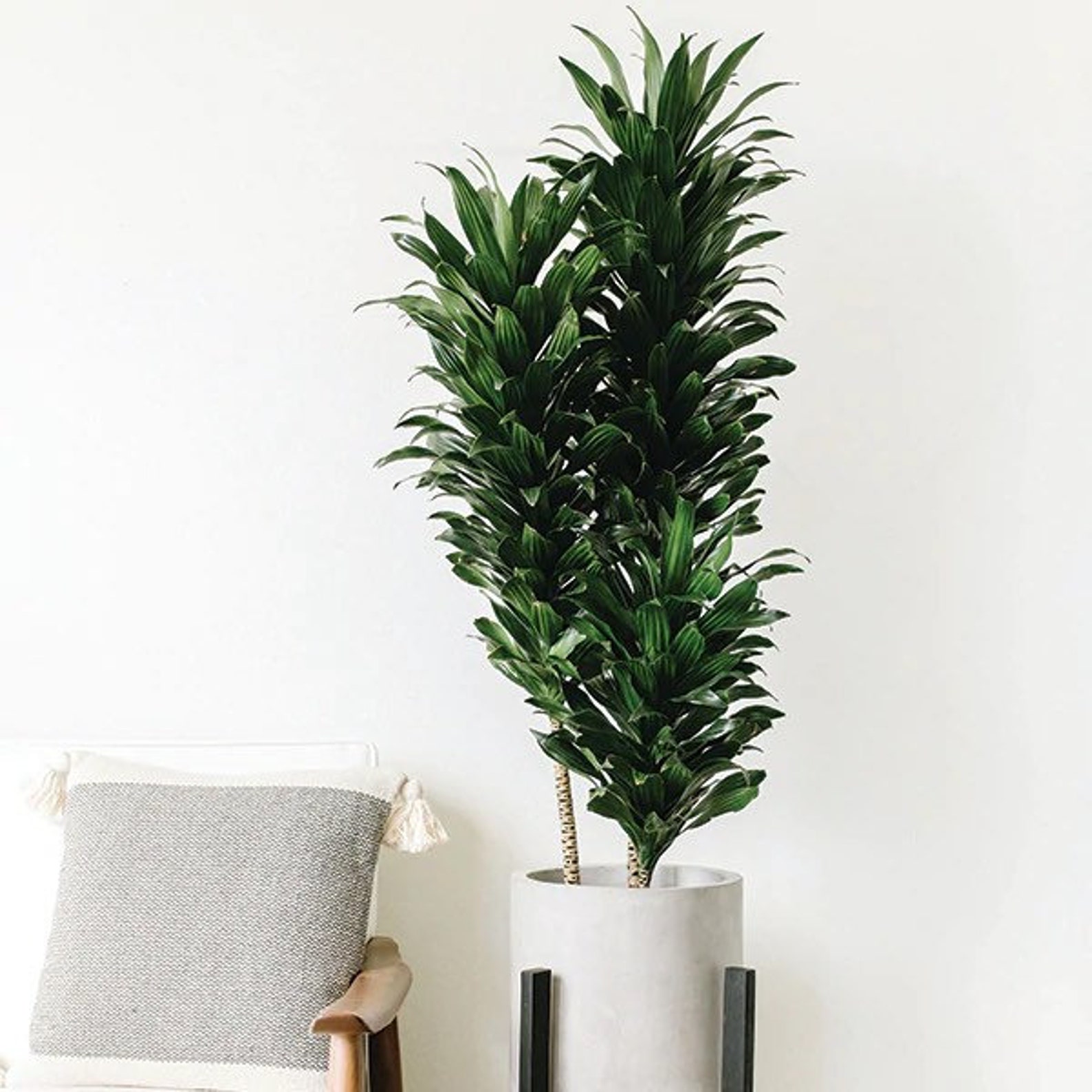
Also known as dragon tree, dracaena is a decorating go-to plant that’s easy to maintain. A slow grower, it can reach up to 6 feet tall indoors. With its flourish of spiky leaves, dracaena possesses a Dr. Seuss quality that makes it a wonderful, whimsical element in a modern interior. One of the best potted trees for indoors, dracaena offers plenty of varieties.
Water: Dracaenas like moist but not soggy soil, so water once a week or every other week as needed. The soil should dry between waterings. They prefer purified or distilled water.
Light: They prefer bright, filtered light, but are one of the 10 Trees That Tolerate Low Light Indoors. Direct sun can scorch leaves, which will turn brown and fall off.
Soil: Soil rich in organic material suits them best.
5. Fiddle-Leaf Fig
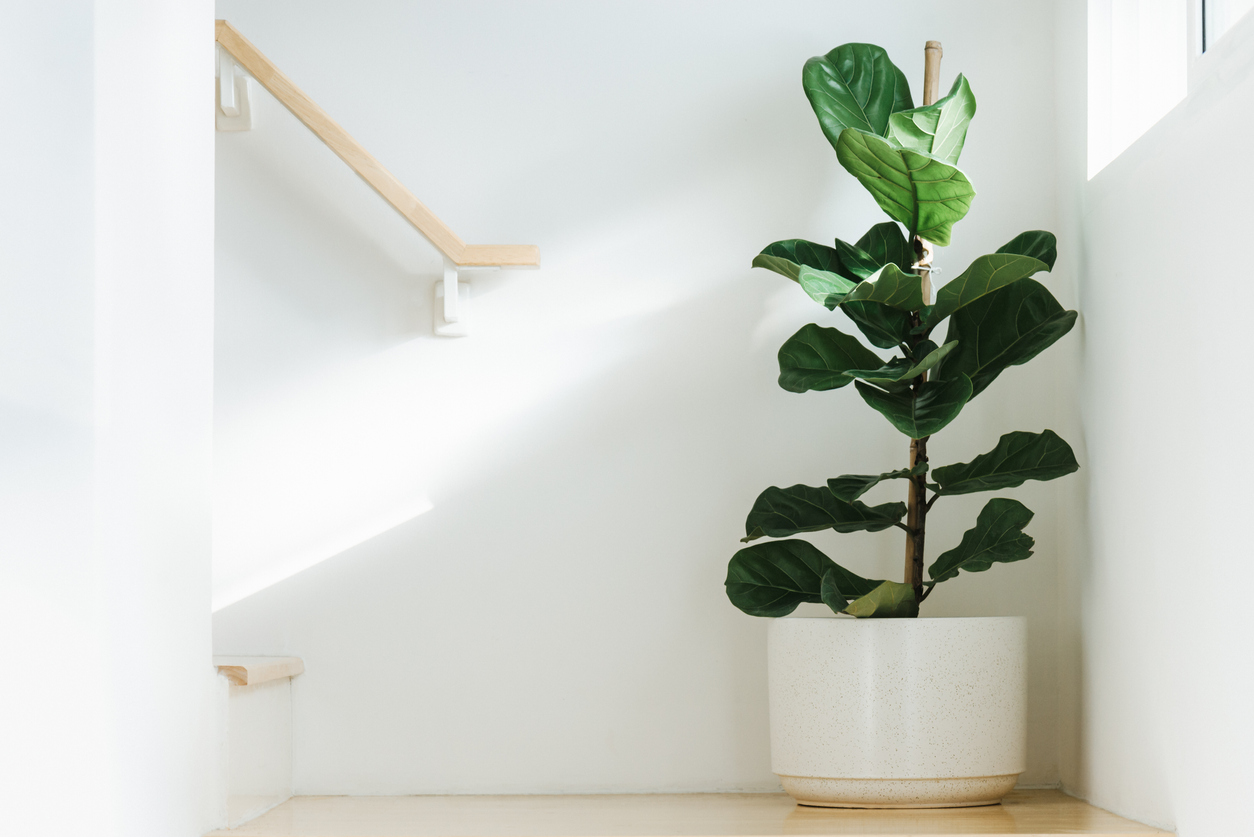
The fiddle-leaf fig is a member of the genus Ficus, which encompasses so many popular houseplants. The fiddle-leaf, however, has much larger leaves than its cousins, and those distinctive leaves, coupled with the tree’s elegant branching structure, have made it ubiquitous in recent years. It’s beautiful, but fussy. This indoor tree won’t tolerate direct sunlight or wet roots, and it does not respond well when moved. So, if you purchase one, be diligent and consistent with its care routine.
Water: These ficus trees like a consistent amount of water. Estimate 1 cup weekly for plants up to 2 feet tall and add a cup for every couple of additional feet in height. Make sure any excess water drains.
Light: They like a lot of natural light, so feel free to place directly in front of a window.
Soil: Well-draining potting soil that’s rich in organic material is best for Fiddle-Leaf Figs. Peat-based soil mixed with perlite is ideal.
RELATED: The Best Soil for Fiddle Leaf Figs
6. Olive
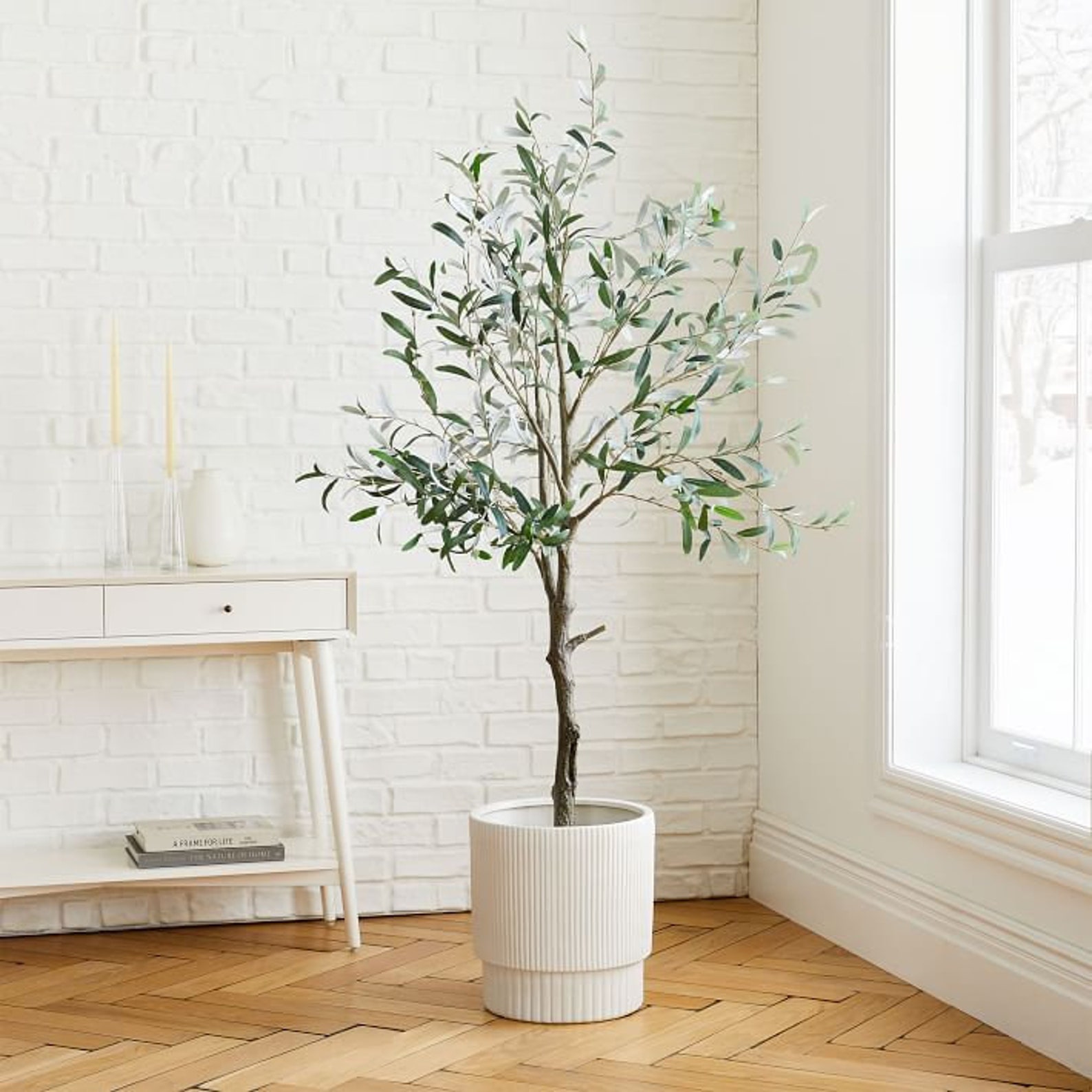
While an olive tree can’t survive indoors forever, you can keep one in a large pot for 8 or 9 years before transplanting it outside. Olive trees, which are very tolerant of dry air and soil, make excellent houseplants for less attentive caretakers. They’re Mediterranean natives, so they need lots of sunshine. And when the time comes for transplanting, if you don’t live in a sufficiently warm region, give your tree to a friend who settled in a balmier climate.
Water: Moist but not saturated soil is the rule of thumb for olive trees. Water weekly or when the top 2 inches of soil feel dry.
Light: Give them lots of bright, direct light—as much as 6 hours per day of good, southern exposure.
Soil: Sandy soil that drains well, such as cactus soil, is best for olive trees.
7. Fishtail Palm
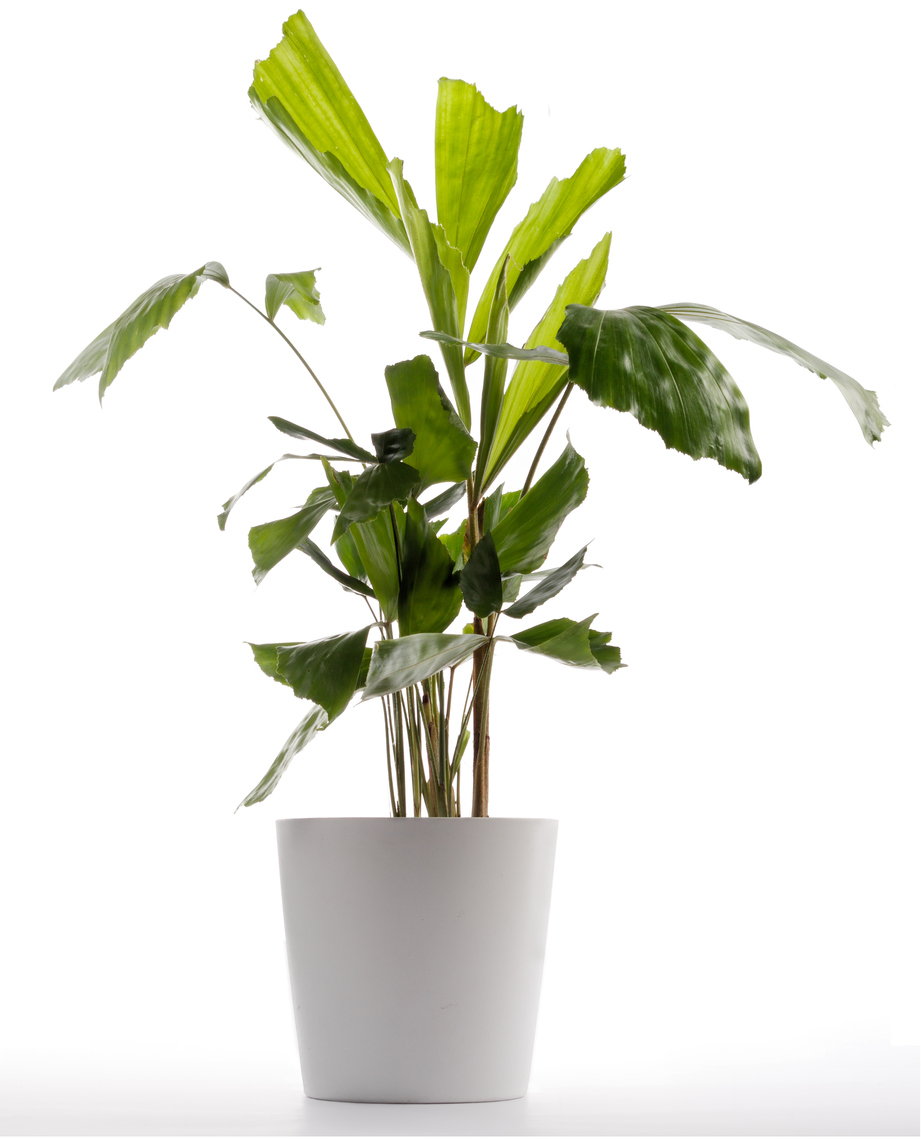
This unusual-looking palm tree with leaves that resemble a fish’s tail makes a wonderful focal point in an office, bedroom, or living room. To thrive, this indoor tree should get plenty of bright sunlight and should never be allowed to completely dry out. A rainforest plant, the fishtail palm likes humid conditions, so if you choose to make one part of your interior decorating scheme, be sure to spritz its leaves with water on a regular basis.
Water: Fishtail palms like a good soaking, but don’t like to sit in water, so wait until the top 25 percent of the soil dries out before dousing them again.
Light: They do well in bright, indirect light from an east or west window, but do not like direct exposure.
Soil: A fast-draining porous soil with plenty of organic matter will keep these palms happy and healthy.
8. Jade Plant
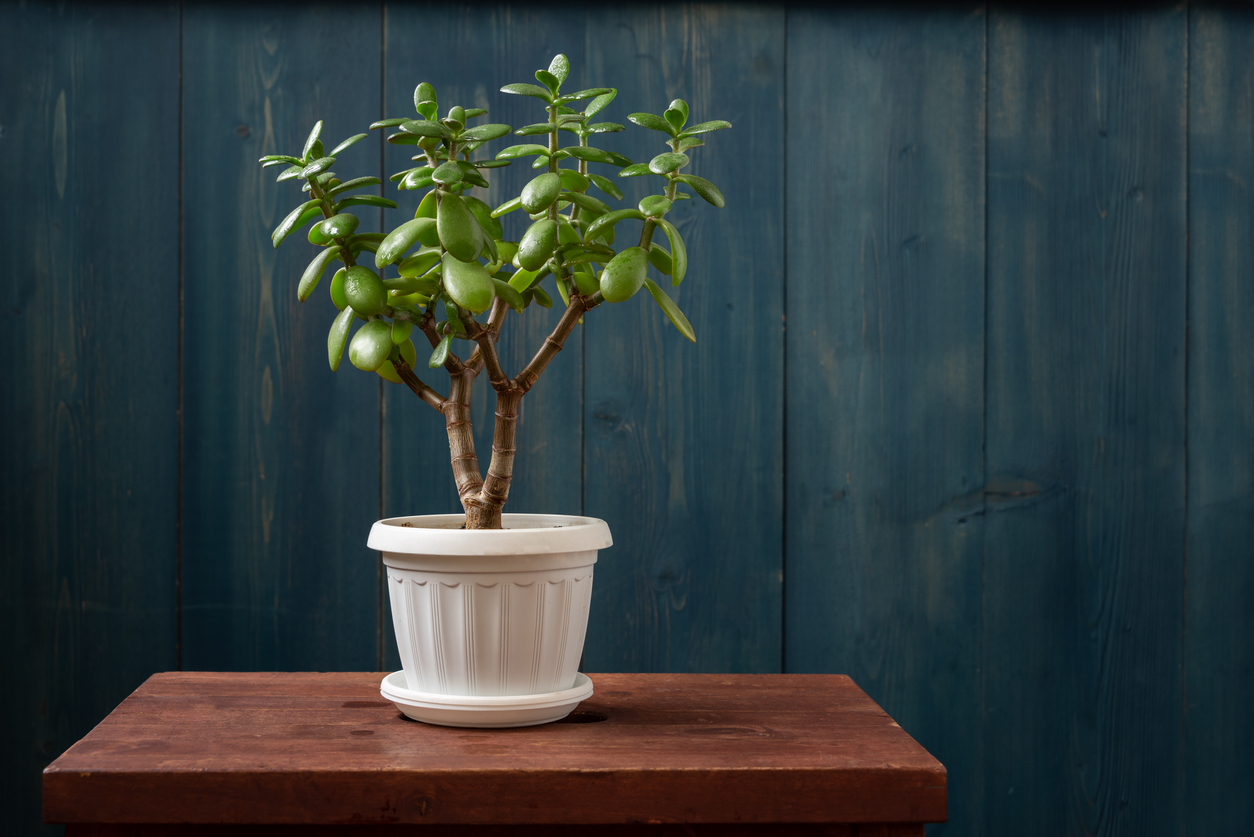
If you’re looking for one of the best trees to grow indoors, consider the jade plant. This easy-to-grow, long-lived succulent has been popular for generations as an indoor plant because it prefers the warm, dry conditions found in most homes. Many growers pass the plant down to family members and friends through cuttings, which are simple to propagate. Its thick, woody stems and small oval leaves can take on a tree-like appearance.
Water: Water when the soil is dry to the touch, but not too often or too much for fear of root rot. Leaf loss or spots indicate dryness.
Light: They love full sun. Without it, they become leggy and spindly, so give them at least 6 hours of bright, indirect light a day.
Soil: Jade plants like well-draining soil. Mix perlite into a commercial potting soil to improve drainage.
9. Weeping Fig
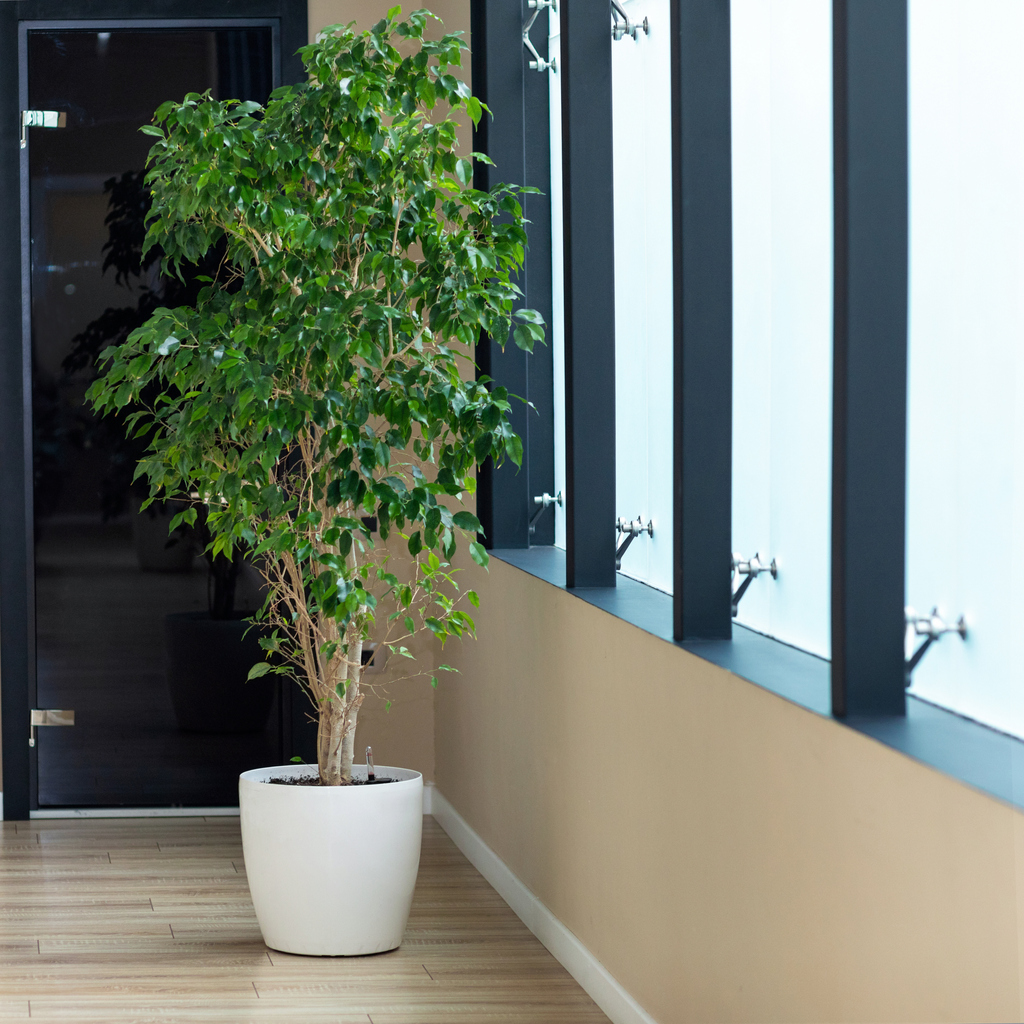
Despite being toxic to humans and animals, the weeping fig (Ficus benjamina) is a great indoor tree. These figs are commonly used as houseplants, no doubt due to their beauty and height. This weeping fig, or F. benjamina, is a relative of the rubber tree and fiddle-leaf fig in this list. Sometimes available with a braided trunk, the F. benjamina is a stately tree with gracefully arching branches that sprout dense, glossy leaves.
This fast-growing tree lends elegance to any room and is equally at home in formal or informal settings. Although it tolerates low indoor light, it can be a fussy plant to maintain.
Water: Weeping figs like to be consistently moist, but leaf drop occurs if they’re in standing water.
Light: Give it lots of bright, indirect light to keep this tree happy. Direct morning sunlight is fine, but protect it from harsh afternoon light.
Soil: Any good, fast-draining potting soil suits figs just fine.
RELATED: The Best Self-Watering Planters for Low-Maintenance Gardens, Tested
10. Yucca
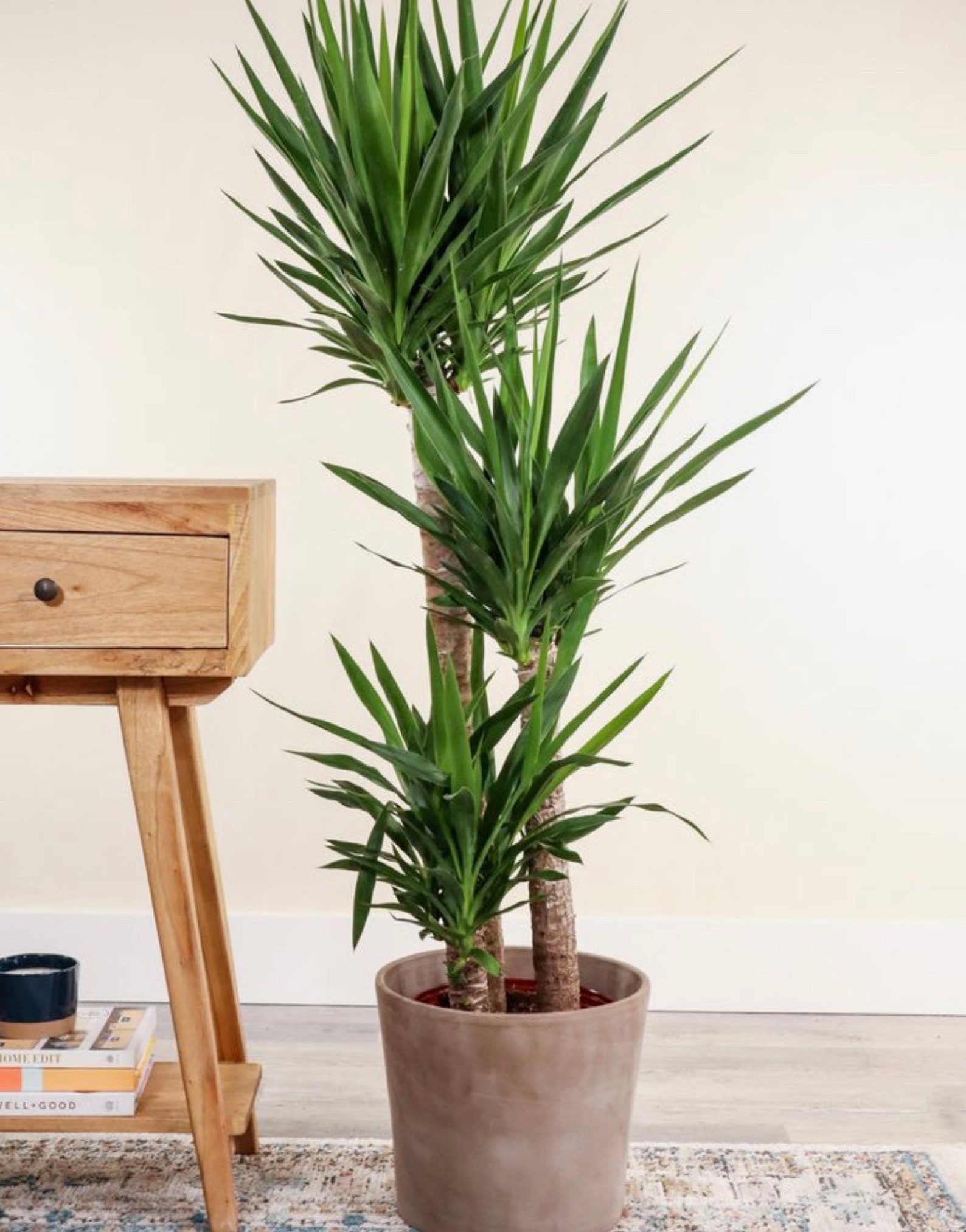
The spiky stalks of the yucca provide a sort of architectural interest in the home. With more than 20 species from which to choose and colors ranging from green to nearly blue, the yucca adds a touch of southwest flare. Yucca varieties also can have variegated leaves with touches of cream, yellow, and white. They can grow on woody stems or tall canes for added height.
Water:Thanks to its desert heritage, the yucca has low water requirements and can even survive near-drought conditions.
Light: Indoor yuccas prefer bright, indirect light, but will produce even better color with a bit of shade.
Soil: Yuccas don’t need great soil; a sand and peat mixture is sufficient. Just make sure it drains well.
11. Lucky Bamboo
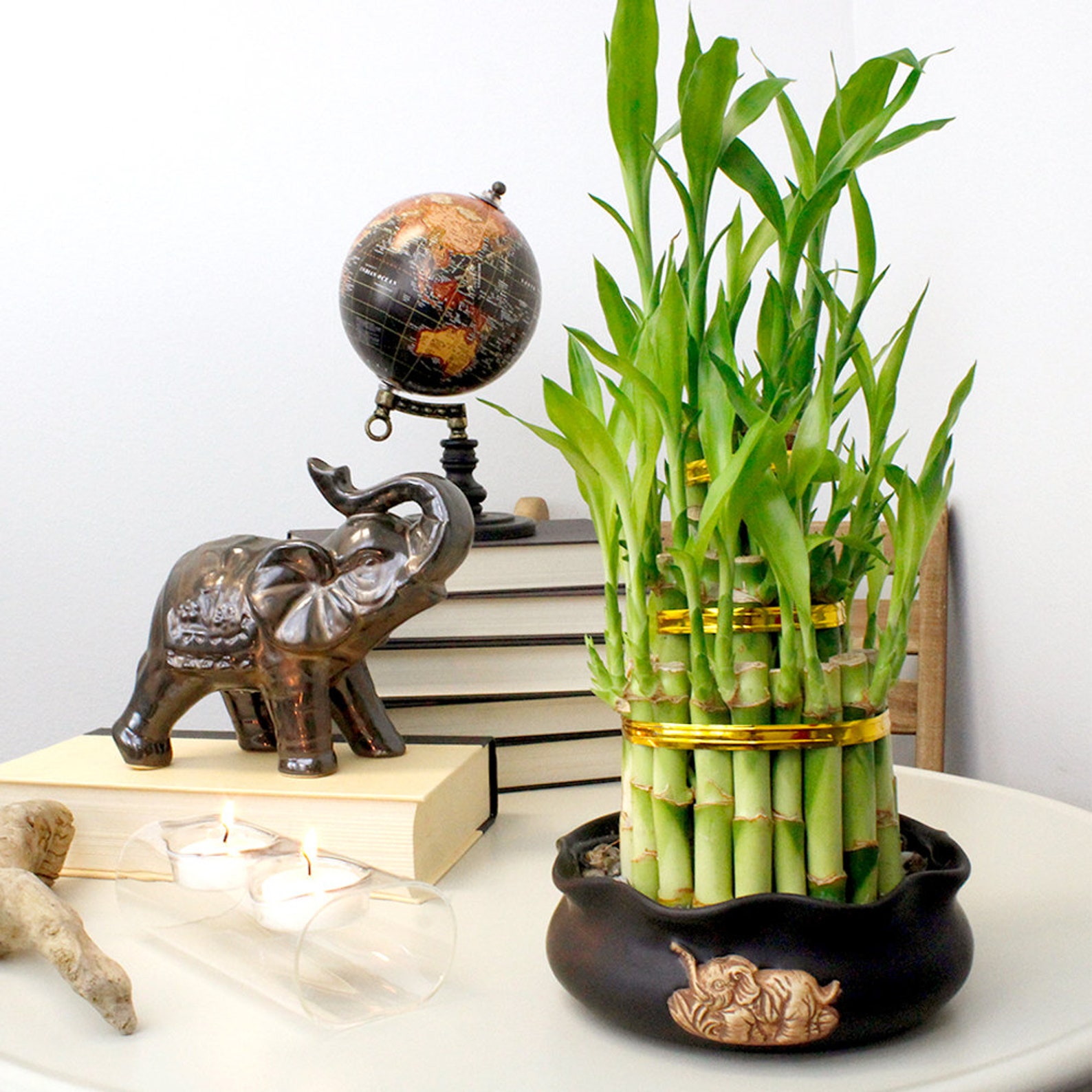
Technically a member of the Dracaena family (and not related to bamboo at all), lucky bamboo is another sculptural plant that adds drama to a room. Stalks can come braided or in free form, twisting this way and that. A common form is bundled stalks straight as an arrow, tied together and grown in water. This nearly indestructible plant is thought to bestow good fortune, particularly when given as a gift. Place yours in a visible, often-visited spot in your home.
Water: They can grow in a vase, since they’re so tolerant of excess water. However, they don’t like chlorine and chemicals, so it’s best to use purified or distilled water.
Light: Lucky bamboo prefers bright, filtered light. Too much direct sun can damage the leaves.
Soil: They can be grown in either moist, well-draining, rich potting soil or in vases with at least an inch of standing water.
12. Bonsai Tree
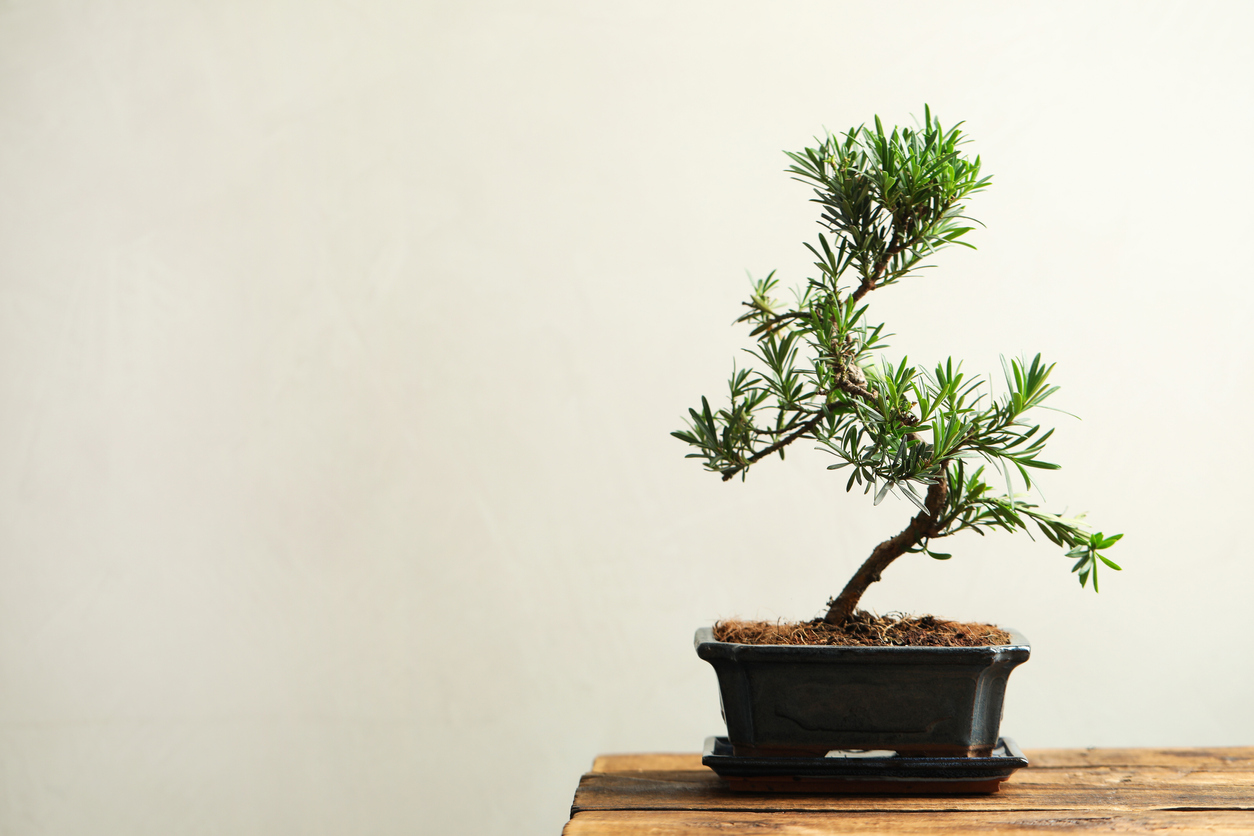
Bonsai does not denote a species of tree, but, rather, an ancient Chinese growing technique (more commonly associated with Japanese horticulture) to keep normal plants in miniature form through sophisticated wiring and careful pruning of roots and branches. Almost any plant can be a candidate for this tabletop treatment. One of the most commonly used species is the Ficus, but juniper may be the best indoor bonsai tree. Flowering varieties are also popular. Individual bonsai trees will have different requirements.
Water: Bonsai trees don’t like to be too wet or too dry. Keep in mind that they live in shallow containers, which may require more frequent, if lighter, watering.
Light: Most bonsai trees are intended to live outside, so when grown indoors, they will need at least 6 hours of direct sunlight each day.
Soil: A well-draining potting mix is best for most bonsai plants.
13. Bird of Paradise
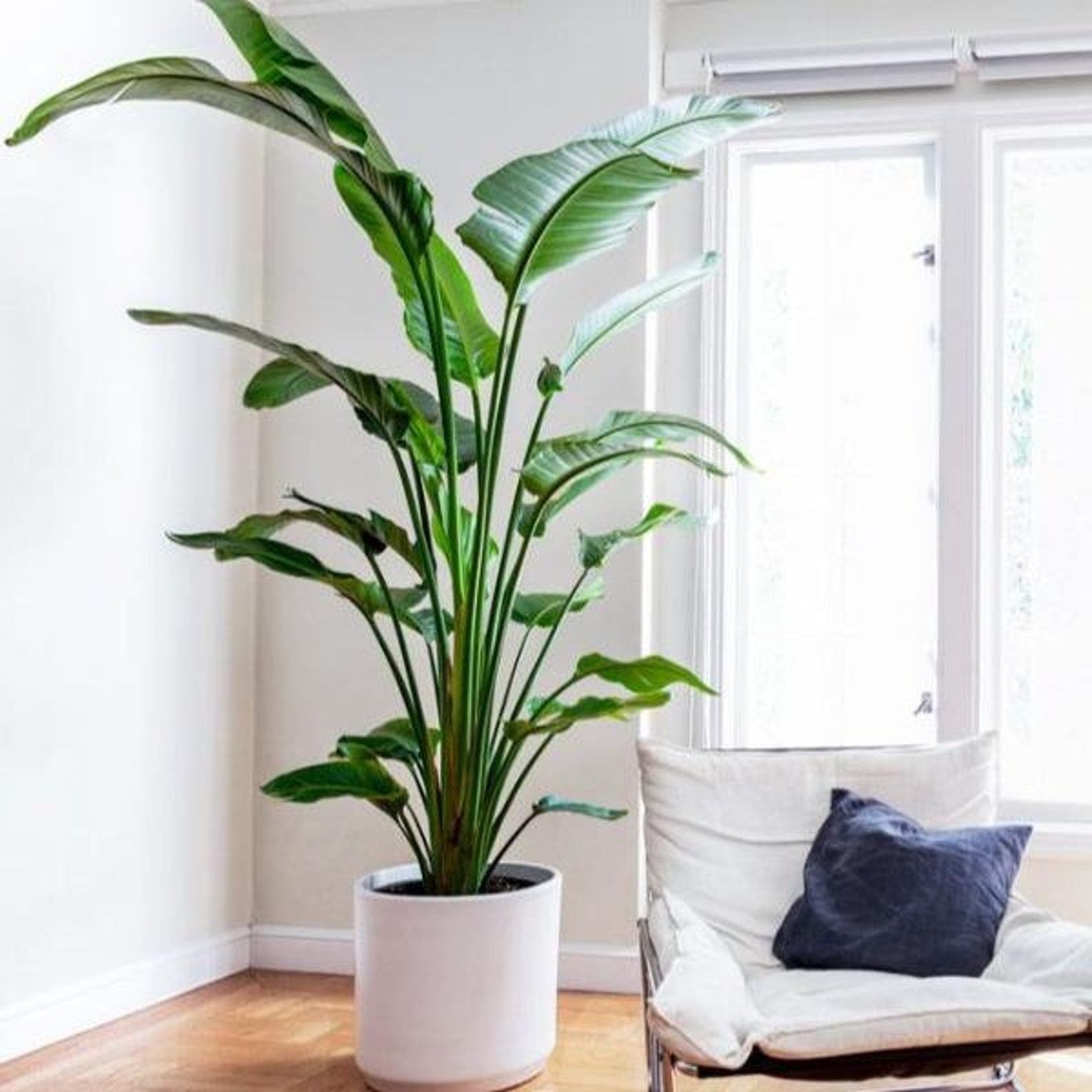
The Strelitzia genus is more commonly known as the bird of paradise, thanks to the shape of its striking blooms. No one forgets this crane-shaped, typically orange, flower. This large indoor tree is a show-stopper even before it blooms, and ranks as one of 10 Huge Houseplants That Make a Statement. Large, split, glossy green leaves on lengthy stalks almost resemble banana foliage and can easily reach 6 feet tall – and wide.
Water: Birds of paradise should be watered every 1 to 2 weeks, after the soil dries out. Using filtered water provides good results.
Light: This plant needs plenty of bright light in order to thrive and bloom. It does not do well in low-light conditions.
Soil: Add perlite or lava rocks to a good potting soil mix for better aeration. These birds don’t like wet feet.
RELATED: The Best Plants for Every Room of the House
14. Rubber Tree
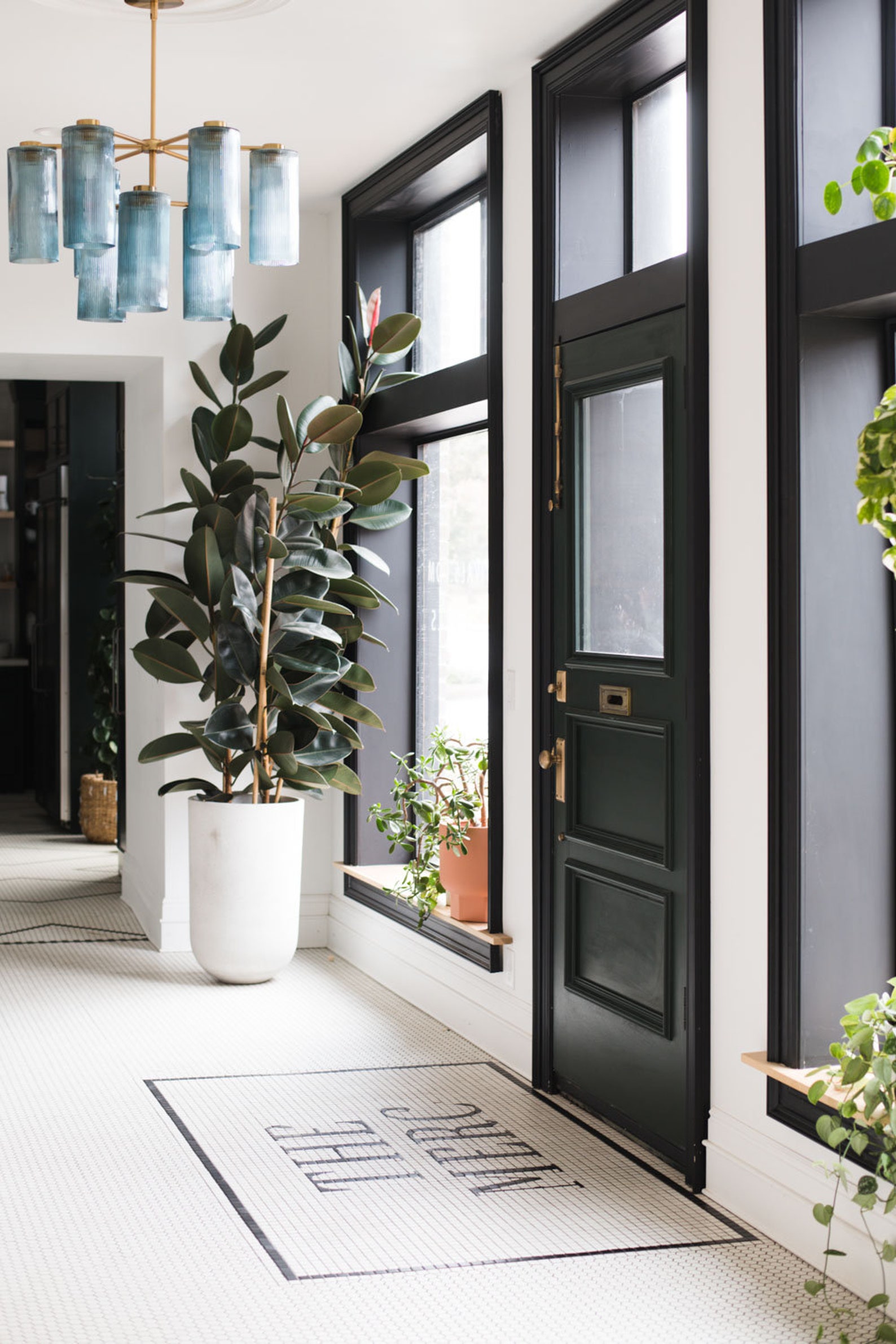
The rubber tree is another great ficus (F. elastica), for growing indoors. It acquired its name because, in the days before synthetics, its latex sap was used to create rubber. In India, its roots were used to build living bridges across rivers. Today, it’s more commonly found adorning home interiors because it’s beautiful, with large, waxy leaves, and it’s easy to care for. It can reach heights up to 30 feet, making it a showy tree. Take care with pets and small children, however, as the sap is toxic.
Water: Rubber trees should be watered about every 1 to 2 weeks, depending on the amount of light they’re getting. The soil should dry out between waterings.
Light: Medium to bright indirect light work best, but this is one plant that can tolerate low-light conditions.
Soil: Rubber trees don’t like wet feet, so a well-draining potting mix that includes perlite and pine bark is ideal.
15. Ponytail Palm
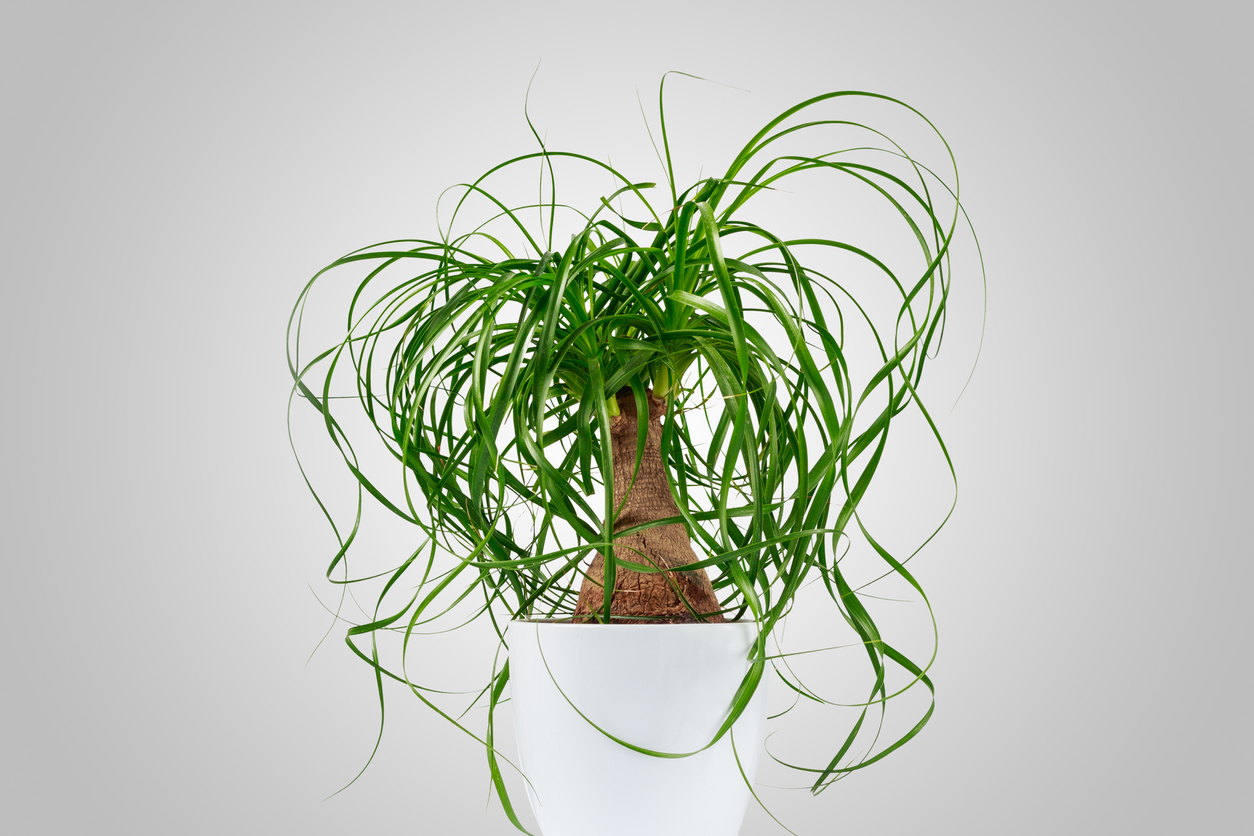
This “palm” actually is a member of the Agave family, and thus a succulent. Also erroneously called a bottle palm tree and the elephant foot tree because its bulbous trunk stores water, the Ponytail Palm is easy to grow indoors. Even if it wasn’t, its spectacular display of long, thin strap-like leaves (the ponytail part) is worth it. Fortunately, this is a very forgiving plant, suitable for beginners and forgetful gardeners alike, many of whom consider it the easiest indoor tree to grow.
Water: Let the soil dry out between waterings. Remember: it’s a succulent, so too much water is not good for it.
Light: Ponytail palms prefer bright light, but can survive low-light conditions for half the year.
Soil: As a succulent, it prefers sandy, well-draining soil.
16. Majesty Palm
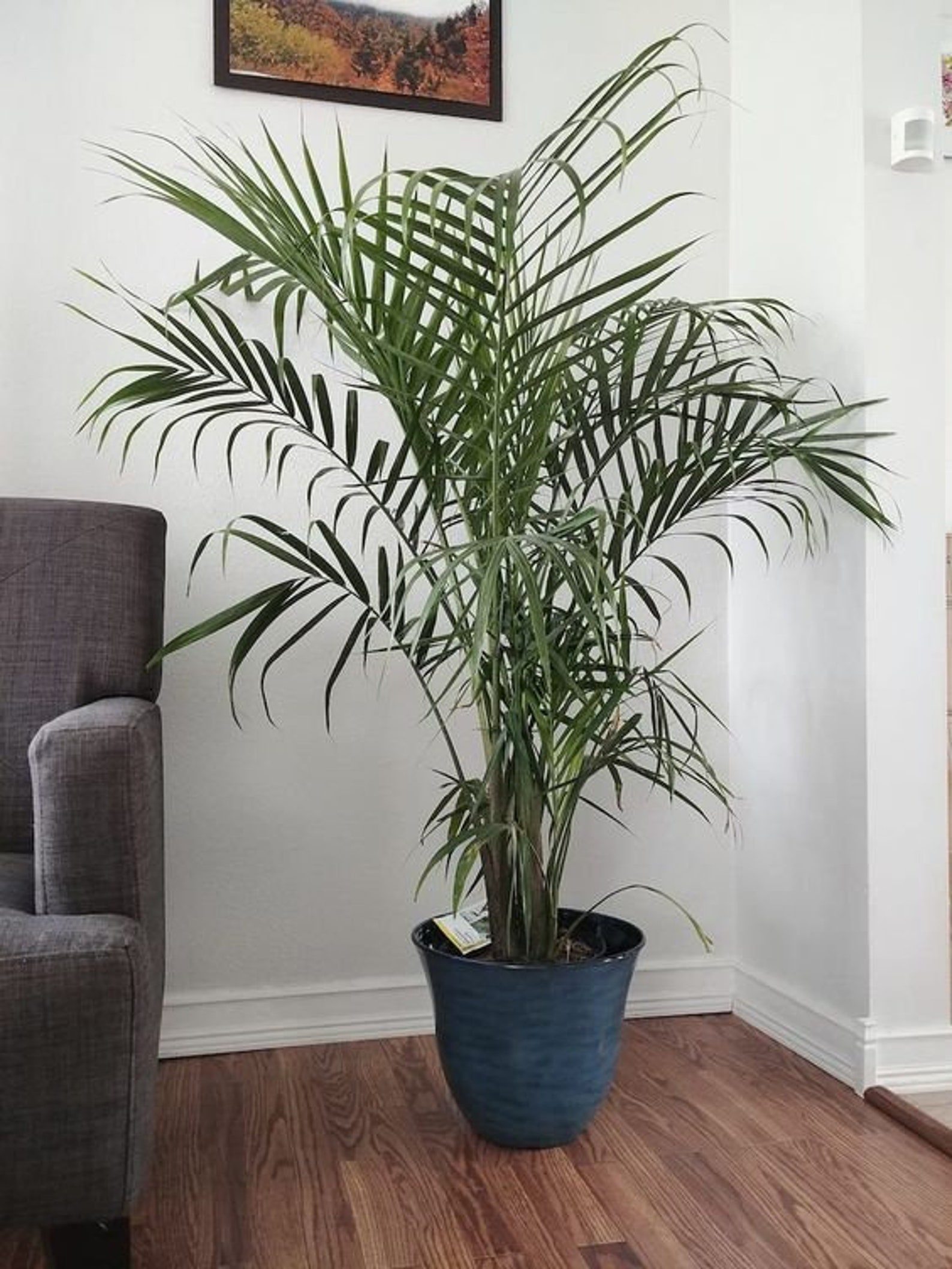
This temperamental beauty is not for the novice grower. An extremely attractive palm that can (slowly) reach up to 10 feet tall, the Majesty Palm features long fronds arching out from multiple stems. Success requires balance: the right levels of light, water, humidity, temperature, and a good indoor plant fertilizer. Given the right conditions, the majesty palm will reward its subjects with a royal exhibition.
Water: They like to be evenly moist, but not soggy. If they dry out too much, they will start losing leaves.
Light: While full, direct sun is too much, the Majesty Palm still needs a lot of light when grown indoors.
Soil: Their list of requirements includes: a peat-based potting mix with a low pH (they prefer acidic soil), and good drainage to prevent water-logged roots. Choose a potting mix for cactus and succulents and add extra peat.
17. Parlor Palm
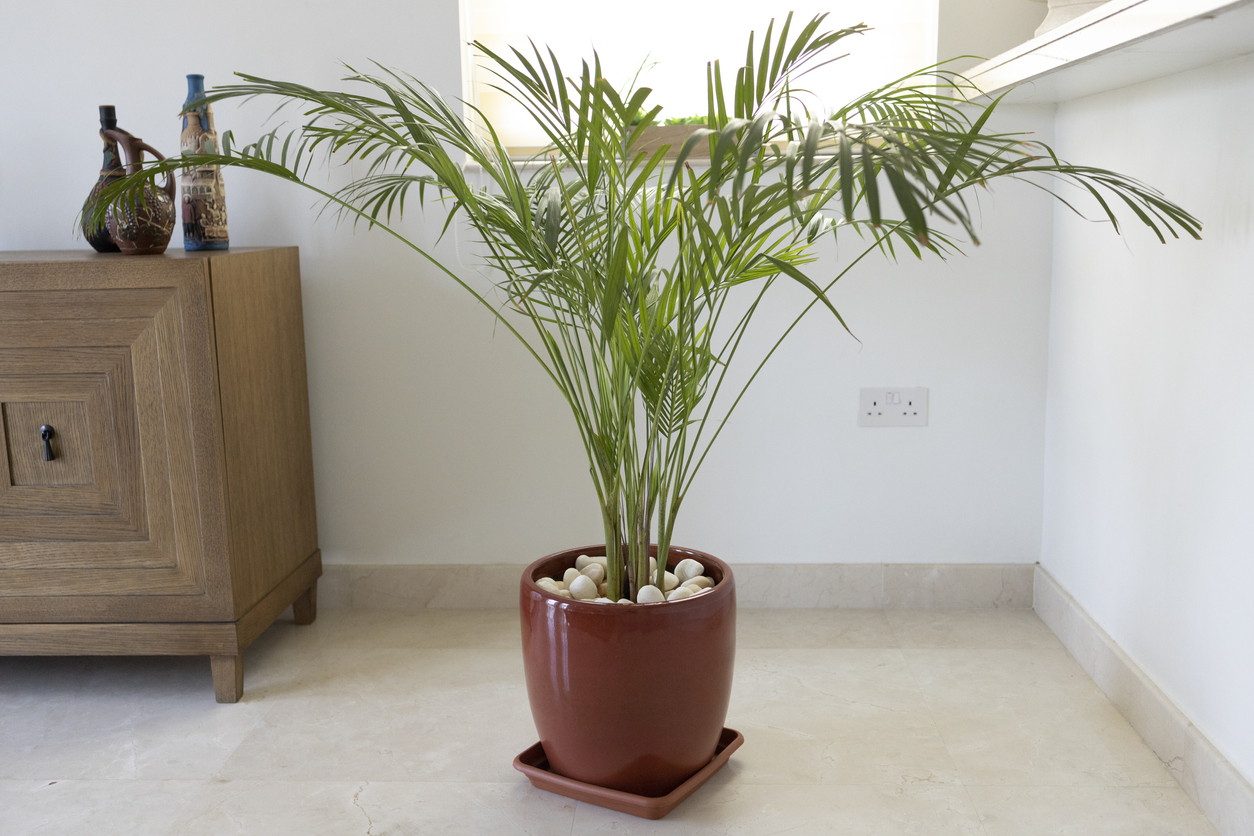
The Victorians named this favorite houseplant the parlor palm, but it also goes by bamboo palm because its stems look and spread like its namesake’s. A true palm, this graceful beauty can grow 10 to 12 feet and is favored because it’s easy to care for and is safe around pets. It’s the most-often sold palm worldwide.
Water: Water a Parlor Palm every 1 to 2 weeks, letting the soil dry out between waterings.
Light: It prefers medium to bright indirect light, can tolerate low light, and hates intense, direct sun.
Soil: It likes a peat-based soil for an acidic to neutral pH. Use a well-draining potting mixture or a special palm mix if you can find it.
RELATED: The 7 Best Etsy Stores for Houseplants
18. Laurel Tree

The laurel goes by several names, including sweet bay, laurel, and bay laurel. Native to the Mediterranean, it played many important roles in Greek and Roman history—providing leaves for crowns and for burning in sacred temple rituals. Today, bay laurel is often used in cooking or homeopathic remedies, but the plants also make attractive potted trees, with glossy leaves and a pleasant aroma.
Water: A laurel tree likes to be slightly moist all the time, but take care not to over water; it doesn’t like to be waterlogged.
Light: They prefer full sun to partial shade. Indoors, place them near a south or west window for maximum light.
Soil: A good commercial potting soil or coconut coir works well because they are lightweight, retain water, and avoid compaction.
19. Norfolk Island Pine
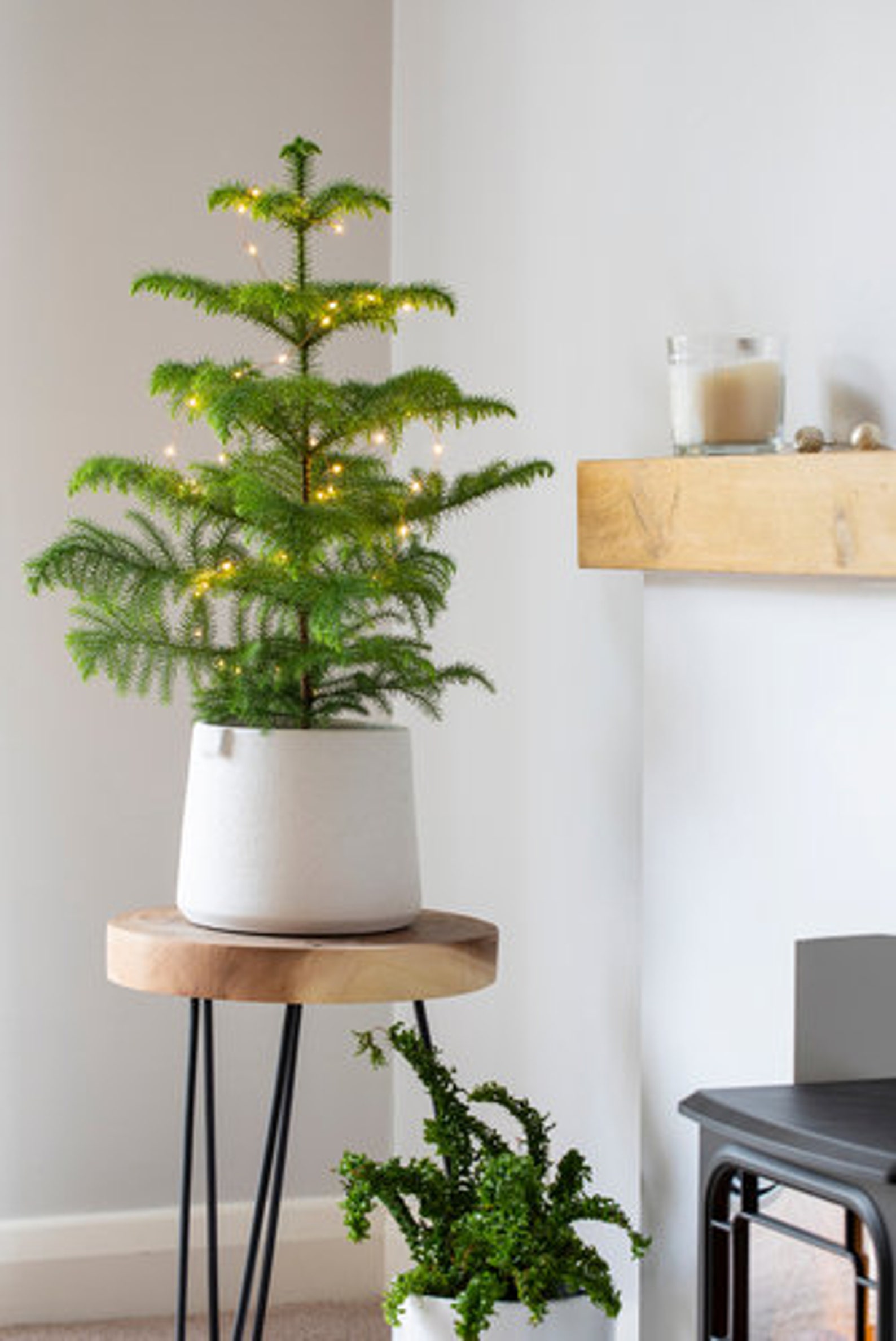
You’ll see Norfolk Island pine trees for sale around the holidays and think this soft-needled plant is the best evergreen tree, but most people don’t realize they are not a pine tree and, therefore, not as hardy as a true pine. Rather, they are more like a gardenia or orchid. That means the Norfolk Island Pine needs high humidity in its environment. Given the right conditions, they are rather fast growers, producing a straight trunk with pleasingly symmetrical branches that can be decorated for holidays to come. They are, however, toxic to pets.
Water: Water when the soil feels dry. They like to be slightly moist, but don’t let them sit in water. Brown branches indicate over-watering or under-watering.
Light: As a tropical plant, Norfolk Island Pine prefers several hours of direct, bright light, so place it in a south-facing window. They can tolerate full indirect, bright light.
Soil: Use a porous, sandy, slightly acidic potting mix. You can add peat moss or sand to commercial potting mix to achieve this.
20. Prickly Pear Cactus
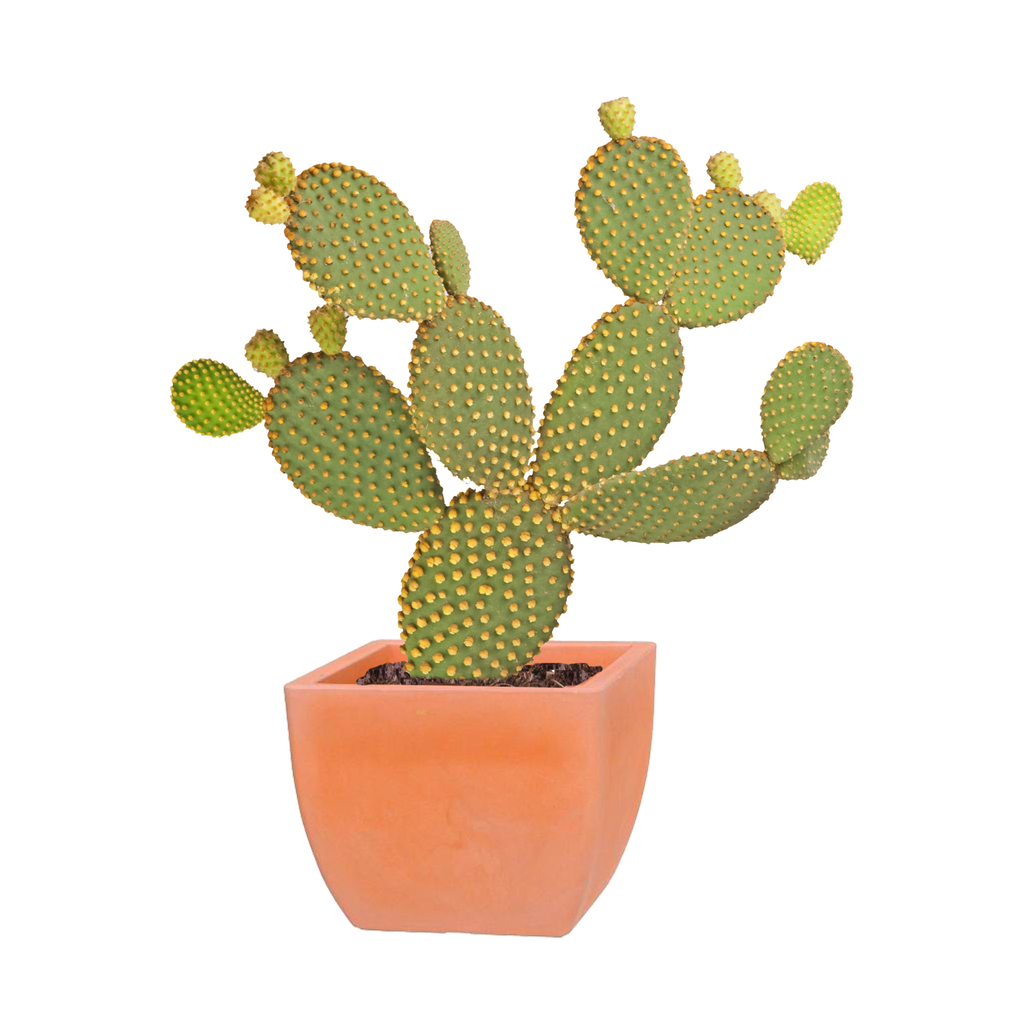
If you’re in a desert state of mind, add a potted prickly pear cactus to your home. There are hundreds of varieties of these stately cacti, some of which can reach indoor heights of 18 feet and live for 20 years. Most feature segmented stems with chunky, thick, flat pads that are covered in spines. Take care in watering and moving them because small barbs can detach and stick to you. They do well in warm, bright homes; just keep them away from heat registers and drafts because they don’t like temperature fluctuations.
Water: Water every 2 to 3 weeks when the top inch of soil feels dry. Never let them sit in water. If you warm the water first, they’ll love you for it.
Light: This desert-dweller loves the light! Give it as much bright, direct light as possible, at least 4 to 6 hours a day. You can even let it enjoy summer vacation outdoors to soak up more sun.
Soil: Choose a cactus mix potting soil or anything that is dry, sandy, or gravelly for fast drainage.
21. Saguaro Cactus
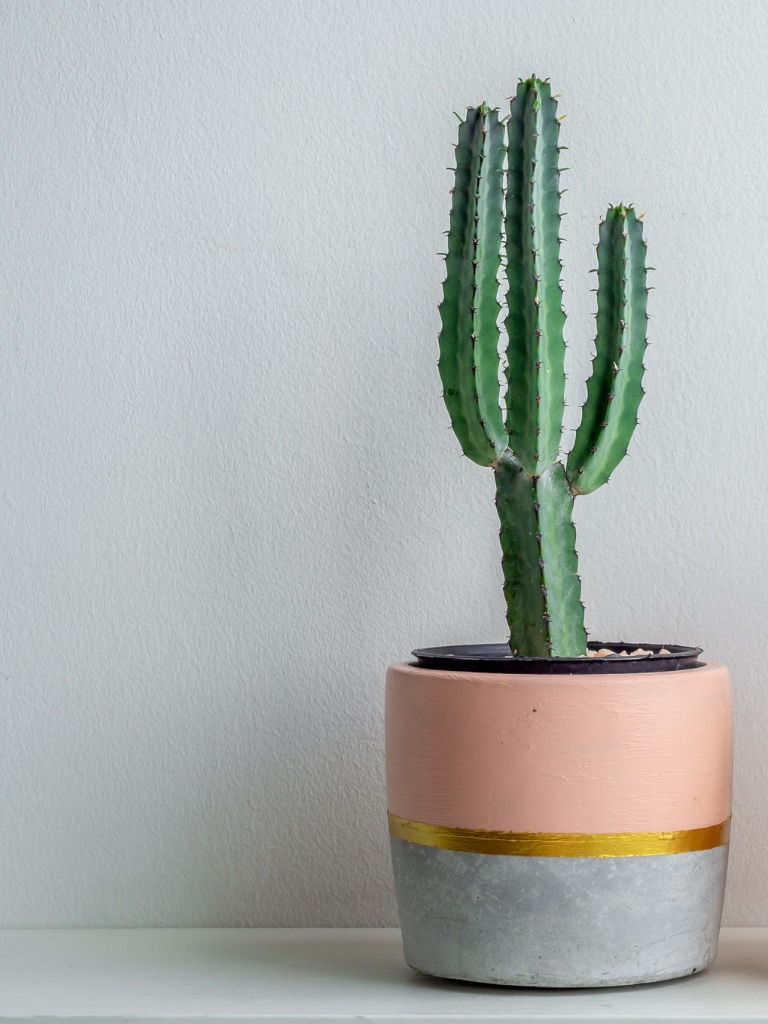
For a taller cactus that adds an architectural dimension to your décor, try the Saguaro cactus. This slow-growing, sun-loving columnar cactus plant loves warm, dry temperatures, making it a good candidate for interior living. With a lifespan as long as 150 years, these distinguished cacti don’t need a lot of care, but if you treat them right, they’ll put on a show of flowers once a year that will blow you away.
Water: During winter dormancy, water only once a month; they can withstand periods of drought. During their growing season—and if you want them to produce flowers—water more frequently.
Light: Saguaro cacti love bright, direct light, so place them in front of south- or west-facing windows.
Soil: Because it hails from the desert, the Saguaro prefers a neutral, loamy, well-draining soil. Choose a cacti and succulent-specific potting mix or add grit to an all-purpose soil. Adding a top layer of pebbles or gravel will further reduce moisture and stabilize the plant as it grows.
22. Juniper
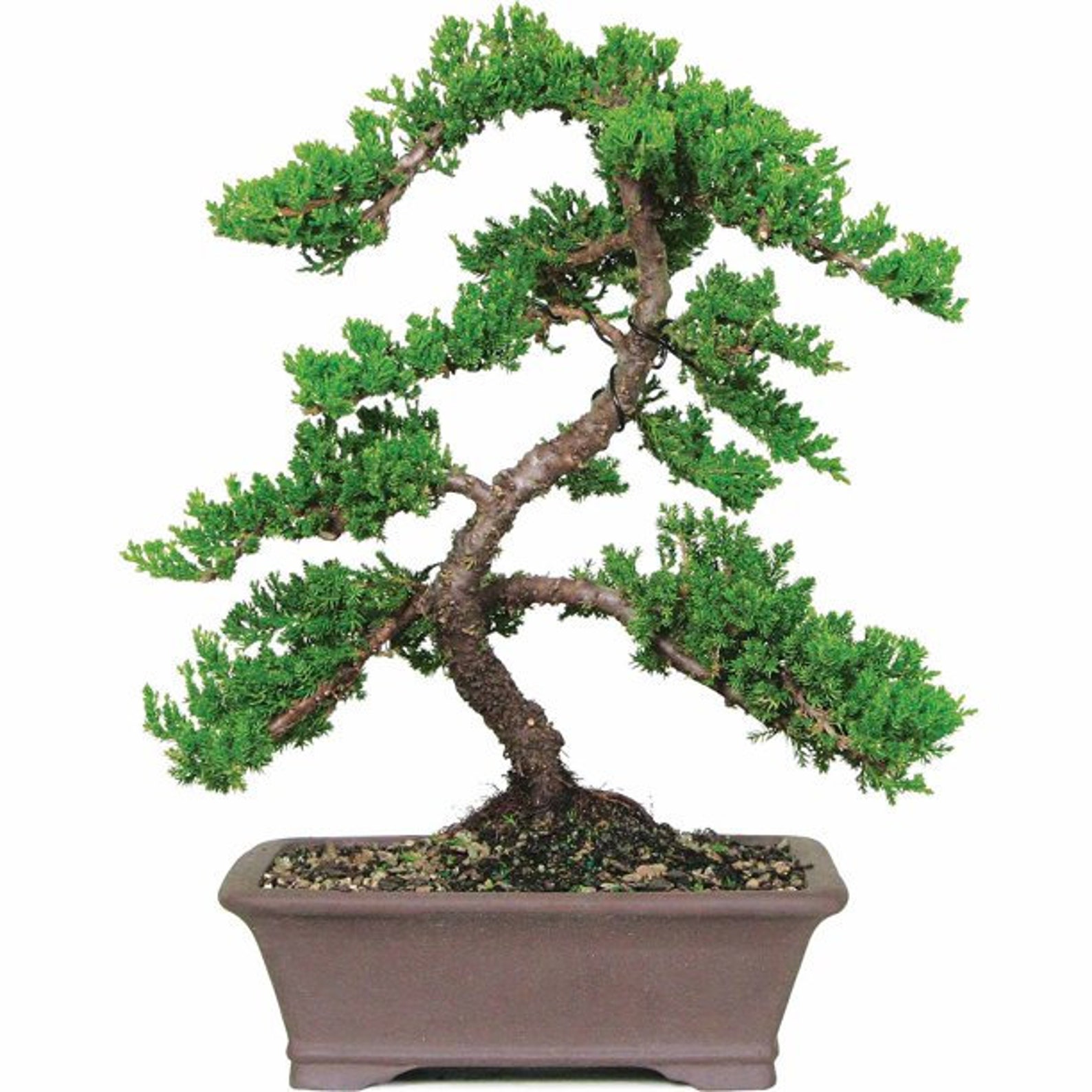
Junipers kept indoors typically come in bonsai form due to their compact growth habit suitable for cascading bonsai design, and are an ideal plant for beginners because they’re forgiving. But keep in mind that they’re really an outdoor shrub, so don’t treat them like an indoor plant. They want lots of humidity, fertilizer with nitrogen during the growing season, and cooler temperatures. Junipers come in a variety of colors, such as dark green, gray-green, reddish-brown, and blue-green.
Water: Water when the soil feels dry to the touch. Because bonsai junipers are kept in shallow pots, they may need to be watered weekly, but don’t overdo it.
Light: They want less light than many other plants; a gentle eastern exposure is just right. Outdoors, shade them at midday because too much direct sun can burn tSoil: They need a fast-draining soil because they do not like to stand in water.


